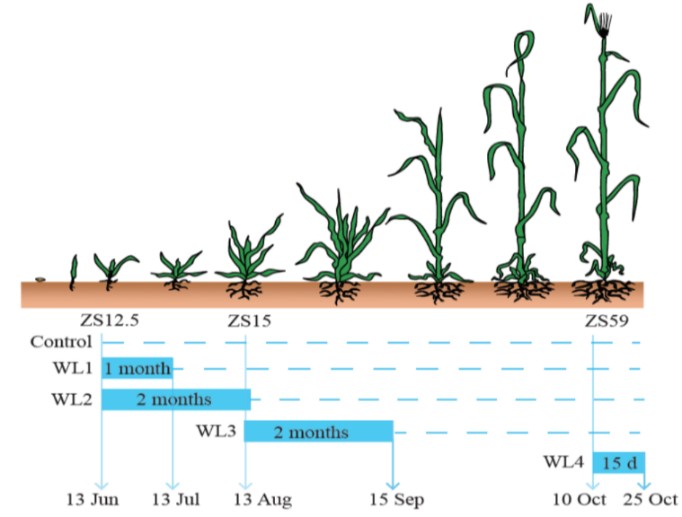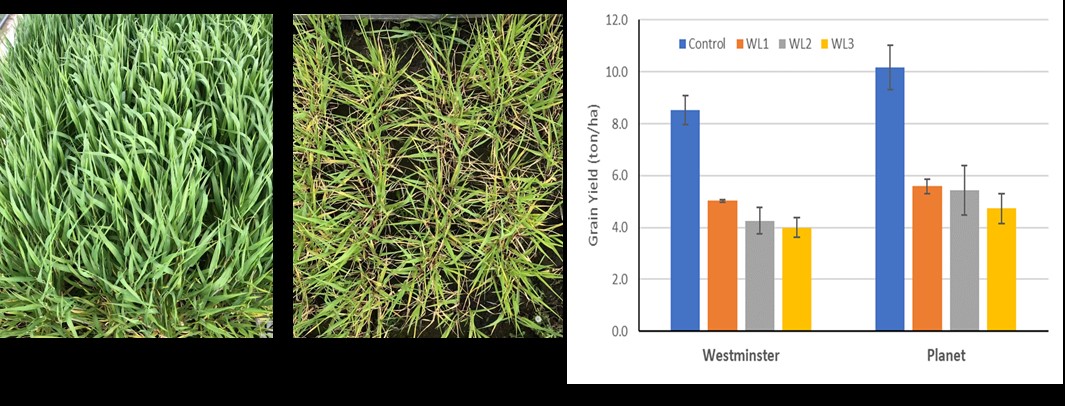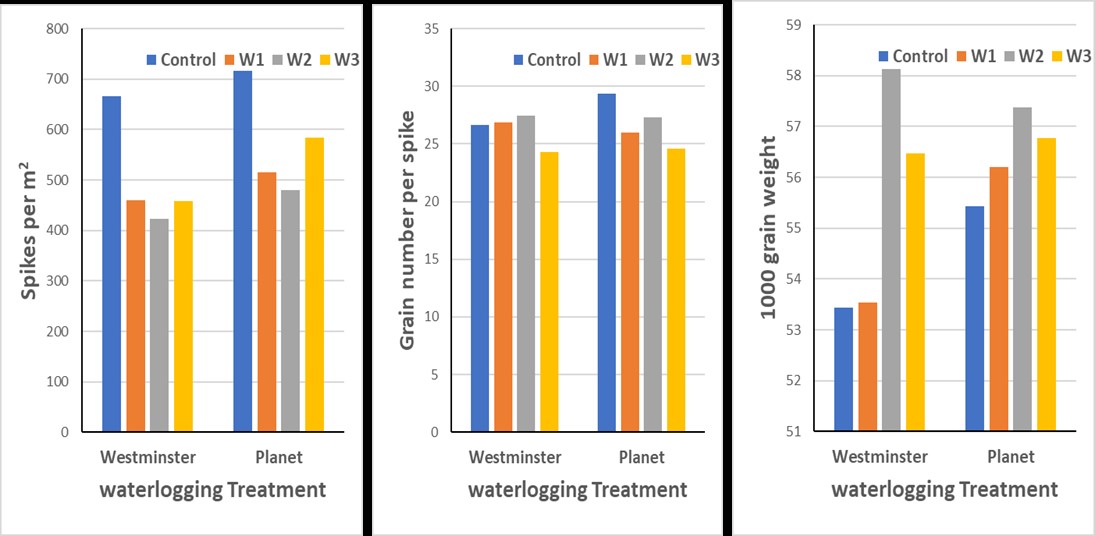Crops that perform well in waterlogged conditions – will that become a reality?
Crops that perform well in waterlogged conditions – will that become a reality?
Author: Meixue Zhou, Ke Liu, Matthew Tom Harrison, S. M. Nuruzzaman Manik, Chenchen Zhao and Peter Johnson (Tasmanian Institute of Agriculture, University of Tasmania) | Date: 01 Jul 2020
Take home messages
- Waterlogging can cause losses in barley production worth over $20 million per annum in the high rainfall zone (HRZ) of Australia.
- Natural variation in waterlogging tolerance was shown by barley varieties and a tolerance gene has been discovered in a wild-type barley.
- The effectiveness of the gene and its impact on yield and quality are currently being tested.
- An agreement has been reached with a breeding company to introgress the gene into their commercial varieties so it can be tested in well adapted backgrounds.
Background
The total cropping area in the high rainfall zone (HRZ) of Australia is around 4 million hectares (Zhang et al. 2006), and on average, two thirds of this cropping zone is sown to cereals, with barley occupying 25 percent of this area. It is estimated that in one out of every five years waterlogging will have a major impact on crop production in the HRZ. Assuming waterlogging causes a 20 per cent yield loss to barley and a grain price of $220/ton, this corresponds to an economic loss of $23.6 million (Manik et al. 2019).
In previous work, natural variation in the waterlogging tolerance was found among barley varieties and a tolerance gene was discovered in a wild-type barley (TAM407227). The gene allows barley to develop aerenchyma tissue in its roots under waterlogged conditions, which acts like a snorkel to bring oxygen to the barley roots.
How much production is lost due to waterlogging?
Controlled environment experiments were conducted using a number of barley genotypes including four commercial varieties. Seeds were sown in five rows in stainless steel tanks (200cm x·100cm x 45cm) filled with a uniform sandy loam soil with the bottom of each tank containing 50mm coarse gravel overlaid with drainage matting. A water tray was used to supply water to the bottom of each tank. The water level of each container was maintained at 75mm depth by fitting a float valve to a reservoir. Excess water from rainfall flowed back to the reservoir and out an overflow. Any water lost from the tanks through evapotranspiration was resupplied by the reservoir to maintain the water level. Control plots were watered near to field capacity until grain filling. Waterlogging was achieved by raising the reservoir above the soil surface such that the water level increased to 400mm (roughly levelling with soil surface) thus the soil was completely saturated. These genotypes were exposed to four waterlogging treatments, shown in Figure 1. The middle three rows were harvested for measuring yield and yield components.
The waterlogging treatments WL1, WL2 and WL3 during the first four months after seedling emergence are most relevant to Tasmania and other high rainfall zones of Australia, and further discussion will concentrate on these treatments. The WL2 was also conducted in a laser levelled field site with a similar water controlling system.

Figure 1. Diagram indicating the four waterlogging treatments with start and end dates; WL1: waterlogging exposed at Zadoks growth scale (ZS) 12.5 for one month; WL2: waterlogging exposed at ZS12.5 for two months; WL3: waterlogging exposed at ZS15 for two months; WL4: waterlogging exposed at ZS59 for 15 days.
Figure 2 shows the impact of the waterlogging treatments on the commercial varieties Westminster and RGT Planet. Waterlogging treatments 1-3 caused severe damage to plants and yield was reduced by around 50%. There was no significant difference in yield response between each of the waterlogging treatments. Although not significant, there was a trend for greater yield loss with increased length of waterlogging and later stage of treatment (i.e. WL3).

Figure 2. The impact of waterlogging treatments on Westminster and RGT Planet.
Figure 3 shows that the yield loss was mainly influenced by reduced tiller numbers and to a lesser extent reduced grain numbers per spike, whereas see size (1,000 grain weight) was not affected significantly.

Figure 3. Effect of waterlogging treatments on yield components of Westminster and RGT Planet.
How to manage waterlogging?
There are a few approaches that can be utilised to reduce the impact of waterlogging on crop growth. These include:
- nitrogen application,
- crop type,
- sowing time,
- engineering solutions (i.e. drainage), and;
- genetic solutions (i.e. breeding for tolerance).
Waterlogging impairs the uptake of nitrogen so increasing fertiliser nitrogen applications after the waterlogging has passed can mitigate the damage and encourage crop recovery. Similarly, choosing a tolerant crop type and delaying its sowing time until spring can minimise crop yield losses due to waterlogging. Different engineering solutions to improve drainage, including the use of raised beds, surface drainage, controlled traffic farming, strategic deep tillage and sub-soil manuring have been used by many growers to reduce the occurrence of waterlogging. However, these are generally expensive approaches only suitable to areas that become waterlogged frequently. Genetic solutions and the development of tolerant varieties is possibly the cheapest way of reducing waterlogging damage and provides a solution that can be readily adopted by all growers.
A genetic solution – does waterlogging tolerance exist?
Previous research identified many genotypes which exhibited waterlogging tolerance. A wild barley accession (TAM407227) showed improved tolerance to waterlogging compared to other genotypes (Zhang et al. 2016).
Further studies of the wild barley accession identified a major gene which contributed to its waterlogging tolerance via the gene’s control of aerenchyma formation in roots under waterlogging stress (Zhang et al. 2017; Zhang et al. 2016). Aerenchyma are air-filled spaces that help transport air from the above-ground shoots to supply the roots of waterlogged plants, much like a snorkel. Once the value of this gene under waterlogging has been quantified and any ‘yield drag’ under non-waterlogged conditions is identified, the gene will be available for adoption in commercial breeding programs.
How effective is the waterlogging tolerance gene?
In this GRDC project, the tolerance gene from TAM407227 has been introgressed into Macquarie and the yield of the resulting plant type (MacquarieWL) has been tested in this experiment. Results showed that the insertion of the gene led to improved plant growth and about a 20% increase in grain yield under waterlogging conditions, which corresponded to a 1-2 t/ha yield increase compared with Macquarie (Figure 4). More barley lines will be tested under field conditions in Western Australia, Victoria and potentially South Australia in coming seasons.

Figure 4. Waterlogging tolerant lines (MacquarieWL) performed much better after two months of waterlogging (WL3 in Figure 1) compared with control lines (Macquarie).
When can growers access tolerant varieties?
Talks have been started with different seed and breeding companies regarding interest in introgressing the waterlogging tolerance gene into commercial varieties. An agreement has been signed between UTAS and Seed Force Pty Ltd, which makes it possible to add the gene to the current commercial variety, RGT Planet and potentially any future releases. The aim is for the new variety to behave the same as RGT Planet under non-waterlogged conditions with no ‘yield drag’, while performing much better under waterlogging stress. A rapid backcrossing program has been developed which accesses a world class screening facility, enabling growers to access the new varieties in 2-3 years.
Conclusion
A new gene for waterlogging tolerance has been discovered in a barley wild type. The addition of the tolerance gene into a commercial variety improved grain yield by more than 20% compared to the original variety under waterlogging conditions in both the tank and field, which correlated to a 1-2 t/ha yield increase. The addition of the gene influencing waterlogging tolerance into current commercial barley varieties may have huge benefits for growers in the high rainfall zones of Australia and may also have application in medium rainfall zones where waterlogging is less frequent. Collaboration with seed and breeding companies and assistance with a rapid backcrossing program will enable growers to benefit from new waterlogging tolerant varieties within 2-3 years.
Acknowledgements
The research undertaken as part of this project is made possible by the significant contributions of growers through both trial cooperation and the support of the GRDC, and the authors would like to thank them for their continued support. The authors would also like to thank the staff and students in our research group, and the national and international collaborators for their continued support.
References
Manik SMN, Pengilley G, Dean G, Field B, Shabala S, Zhou MX (2019) Soil and Crop Management Practices to Minimize the Impact of Waterlogging on Crop Productivity. Frontiers in Plant Science 10:140
Zhang H, Turner N, Poole M, Simpson N (2006) Crop production in the high rainfall zones of southern Australia—potential, constraints and opportunities. Australian Journal of Experimental Agriculture 46:1035-1049
Zhang XC, Fan Y, Shabala S, Koutoulis A, Shabala L, Johnson P, Hu HL, Zhou MX (2017) A new major-effect QTL for waterlogging tolerance in wild barley (H-spontaneum). Theoretical and Applied Genetics 130:1559-1568
Zhang XC, Zhou GF, Shabala S, Koutoulis A, Shabala L, Johnson P, Li CD, Zhou MX (2016) Identification of aerenchyma formation-related QTL in barley that can be effective in breeding for waterlogging tolerance. Theoretical and Applied Genetics 129:1167-1177
Contact details
Professor Meixue Zhou
Tasmanian Institute of Agriculture, University of Tasmania
+61 408365204
meixue.zhou@utas.edu.au
GRDC Project Code: 9179582,
